Have you ever had fruits served in their own thickened sweet juice and wondered how you could do that at home? Today we're learning how to macerate fruit with sugar!
Do you know how to macerate fruit? Have no clue to what I’m even talking about? Think of macerating to fruit as marinating is to meat.
The fruit basically sits in sweetener or liquid for a time to take on a different flavor(s) and often softens (becomes more tender).
If you’ve ever had fruit, strawberries being one of the most common, that were in their own sweet juices that was slightly thickened and almost syrupy or had a secondary flavor like mint or liquor, it likely was macerated.
There are basically 2 ways to macerate fruit: one with sugar, and the other with a liquid.

The “culinary elite” likely wouldn’t even refer to macerating fruit with sugar as true macerating since it doesn’t start with a liquid.
Technically, the sugar does draw out some of the liquid from the fruit that it then soaks in, though. Plus, I’ve personally never seen this method called anything else, so we’ll stick with it.
I was in Costco recently and saw these deliciously red fresh strawberries now in season from the states and couldn't resist picking some up. They were so good that I had to go back and get some more to macerate and make the first shortcakes of the season with.
Macerating is a good idea for any fruit that may not be quite sweet enough to eat on its own or is going to go bad otherwise in a day or 2. After macerating, you can use the fruit as a dessert topping on cake or ice cream, on waffles or pancakes or just eat them as is.
The basic recipe is pretty simple. You’ll just need fruit, sugar and a container.
Oh, and if you need motivation for why one would want to take the time to macerate fruit? Well, it’s so you can make delightfully yummy things like this…
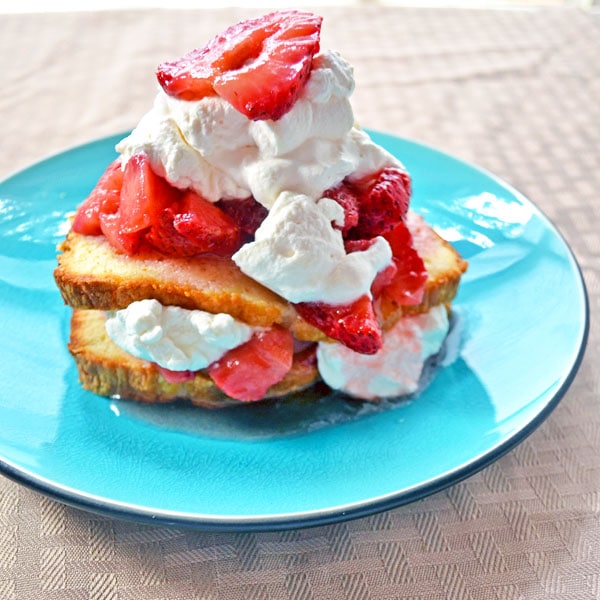
Recommended Equipment (Contains affiliate links.)
This recipe is super simple and you really only need a good paring knife for slicing up the fruit and a large container with a tight sealing lid to put it all in. I usually just shake up everything in the container, but do like a ladle to serve the fruit so I can get plenty of that delicious thick syrup.
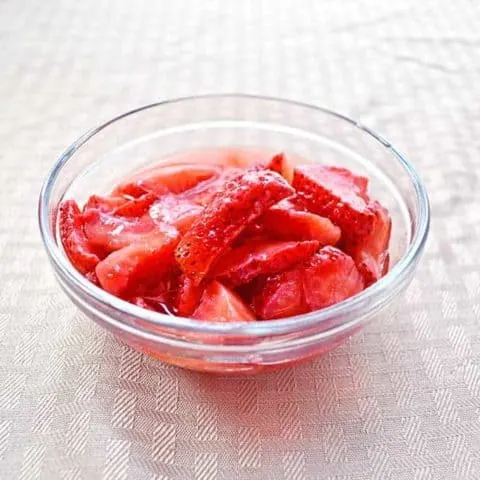
How to Macerate Fruit with Sugar
Basic sugar maceration of fruit is easy and tasty, but can be easily taken to the next level with other added flavors (see notes for ideas!).
Ingredients
- Fruit of choice (I usually use a minimum of 2 lbs)
- Sugar (I use about ⅓ cup per 2 lbs of fruit)
- Fresh lemon juice (optional; about 1 Tablespoon per 2 lbs fruit)
Instructions
- Thoroughly wash and dry fruit.
- Small berries like raspberries can be kept whole, but if using larger fruits, like peaches strawberries, slice or cut them into bite sized pieces.
- Place prepared fruit into a large enough non-reactive bowl (plastic or glass) so that there is still room to toss the fruit around.
- Sprinkle sugar over the top of fruit and add lemon juice, if desired. I very rarely use it myself.
- Cover bowl with lid or plastic wrap and toss/shake the bowl so that fruit becomes evenly coated in sugar.
- Let fruit sit at room temperature for about 30 minutes to start macerating (or have sugar syrup form) and then place in the refrigerator until serving. Results are best when allowed to sit over night or even a day or 2. I always shake the container a bit more whenever I open the fridge for something.
- Cover and refrigerate leftovers.
Notes
To add extra flavor, you can also add extracts, citrus, herbs, balsamic vinegar, etc. depending on the fruit you are using.
Recommended Products
As an Amazon Associate and member of other affiliate programs, I earn from qualifying purchases.
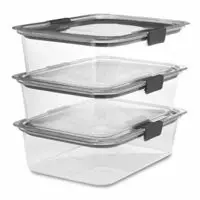
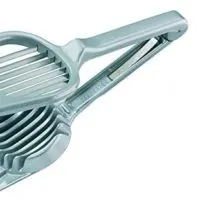
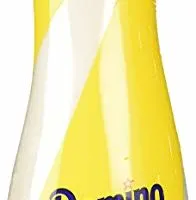
manda simmons
Saturday 11th of September 2021
Hi I’ve macerated plums and greengages and noticed the syrup is fermenting, not sure whether to bottle the syrup with vodka or quite what to do. It tastes fine if a bit sweet. Will it continue to ferment and get stronger? Any suggestions please
Sean Dennis
Sunday 17th of October 2021
@manda simmons, I know that it's too late by now but what you've done is the first step to some wine processes.
If you wanted to make macerated fruit into wine it's super cheap and easy. (you get 5 bottles worth for the cost of the fruit, sugar, and some yeast)
With at least 2 lbs of macerated fruit in a 1 gal or larger jar, add sugar until your mixture totals 2-3 cups of sugar including the sugar used for maceration. Add water until the total volume is 1 gallon, and shake vigorously until the sugar is dissolved. Let sit for a few minutes to be sure the sugar is totally dissolved and doesn't settle on the bottom. Add 2tbs of lemon juice if your fruit is less acidic than grapes. (If you can test PH, you want it to be around 3-4) Add a half packet of yeast (bread yeast works, but wine yeast is good and not that expensive / hard to find.) Cover the jar with cheesecloth and ensure it's well "sealed" with a rubber band. Wait 2-4 weeks, stirring daily with a clean spoon until it stops bubbling and then siphon or pour it off into clean containers. If you're pouring, use a colander to catch the fruit.
It's fine to drink at any stage of the process, but ideally you'd wait until fermentation is complete and either the yeast is out of sugar or the alcohol is too high for the yeast to survive. If you want to age it, I recommend placing it into a jug with a small opening so you can stopper it and airlock (like 3$ for the stopper/airlock, 7$ for a 1gal jug or you can repurpose a glass jug from the grocery store.) Do NOT place the brew into a sealed container until you're 100% sure it's done fermenting, which is usually done with a 10$ tool called a hydrometer.
Further fermentation in a bottle can force a cork out or make the bottle explode. It's fine to place the wine in a sealed bottle and then in the fridge, as that will prevent fermentation as well. I recommend swing-top bottles as you can reuse them many times and don't need any tools to seal them. Many fruit wines don't improve with age, though, such as strawberry wine.
Smart Savvy Living
Wednesday 15th of September 2021
@manda simmons, thanks for stopping by. I don't know much about fermenting so I can't really comment on what you should do. I do know that if I found something to appear to be fermenting, fizzy, or bubbling, I would consider it spoiled and discard it.
Nancy Eckhoff
Saturday 11th of April 2020
I serving fresh fruit for Easter and some fruits were just a little bitter. Already mascerated fruit shook and let sit room temp now in fridge ready to serve tomorrow
princesstissue
Sunday 14th of May 2017
Hopefully in homemade ice cream.
Nancy Eckhoff
Saturday 11th of April 2020
No ice cream just fruit in a dish to be eaten. Later would like to make some turnovers possibly monday
Mary C Powers
Friday 30th of December 2016
Thanks for this Michelle and Smart Savvy. I missed out on making my fruit cake this year!! My husband was really disappointed . Then I thought about a Mince Pie. And, he thought that would be great but, he doesn't want me to macerate the fruit in alcohol this year. So, I found the recipe of your's on this site. I'm going to use my golden raisins, currants, apples, dried cranberries. Some orange and lemon juice and the peel. My question is do you think this will be fine with the "just sugar" method of macerating?
Smart Savvy Living
Wednesday 1st of February 2017
Hi Mary, thanks for stopping by. If you're adding in the citrus juice while macerating I think it should be fine. If not, I'd probably add just a bit of warm water, just a tablespoon or a bit a less, since most of your fruits are dried or not as juicy as sliced berries, to get things going.
Mrs. Ana
Friday 30th of September 2016
I have used this method for all my fruit turnovers. YUM I add my spices halfway through the process (remember to stir here) then cook in the pan to just soft. Thicken with tapioca flour and use in my turnovers. If you have never done this ,now is the time to try with this seasons apples!